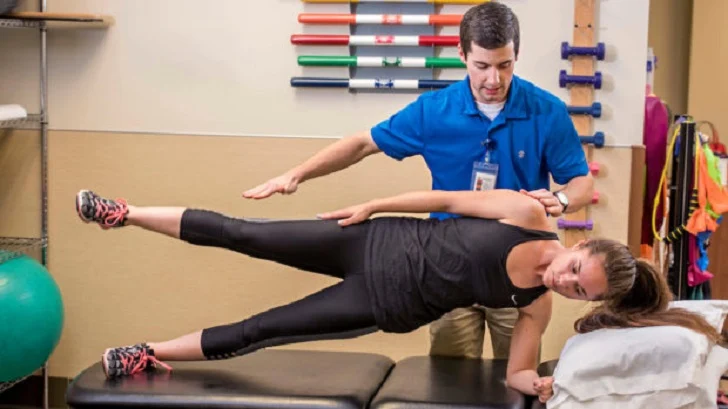Physical therapy helps people of all ages who have medical conditions, illnesses or injuries that limit their regular ability to move and function.
A customized physical therapy program can help individuals return to their prior level of functioning, and encourage activities and lifestyle changes that can help prevent further injury and improve overall health and well being. Primary care doctors often refer patients to physical therapy at the first sign of a problem, since it is considered a conservative approach to managing problems.
Physical therapists are evidence-based health care professionals who offer cost-effective treatment that helps improve motion and relieve pain. Physical therapists can teach patients how to prevent or manage their condition so that they will achieve long-term health benefits. PTs examine each individual and develop a plan, using treatment techniques to promote the ability to move, reduce pain, restore function, and prevent disability. In addition, PTs work with individuals to prevent the loss of mobility before it occurs by developing fitness- and wellness-oriented programs for healthier and more active lifestyles.
Here are some ways a physical therapist can help you.
Reduce or eliminate pain.
Therapeutic exercises and manual therapy techniques such as joint and soft tissue mobilization or treatments such as ultrasound, taping or electrical stimulation can help relieve pain and restore muscle and joint function to reduce pain. Such therapies can also prevent pain from returning.
Maximize Your Movement
Pain-free movement is crucial to your quality of life, your ability to earn a living, and your independence. Physical therapists are movement experts who can identify, diagnose, and treat movement problems.
Participate In Your Recovery
Physical therapists work collaboratively with their patients and clients. Treatment plans are designed for each person’s individual goals, challenges, and needs.
Recover from a stroke.
It’s common to lose some degree of function and movement after stroke. Physical therapy helps to strengthen weakened parts of the body and improve gait and balance. Physical therapists can also improve stroke patients’ ability to transfer and move around in bed so that they can be more independent around the home, and reduce their burden of care for toileting, bathing, dressing and other activities of daily living.
Avoid Opioids
Opioid risks include depression, overdose, and addiction, plus withdrawal symptoms when stopping use. In some situations, dosed appropriately, prescription opioids are an appropriate part of medical treatment. However, the Centers for Disease Control and Prevention (CDC) is urging health care providers to reduce the use of opioids in favor of safe alternatives like physical therapy for most long-term pain.
Avoid Surgery
Before you undergo expensive or invasive surgery, try physical therapy. For some conditions, including meniscal tears and knee osteoarthritis, rotator cuff tears, spinal stenosis, and degenerative disk disease, treatment by a physical therapist has been found to be as effective as surgery.
Improve your balance and prevent falls.
When you begin physical therapy, you will get screened for fall risk. If you’re at high risk for falls, therapists will provide exercises that safely and carefully challenge your balance as a way to mimic real-life situations. Therapists also help you with exercises to improve coordination and assistive devices to help with safer walking. When the balance problem is caused by a problem in one’s vestibular system, Physical therapists can perform specific maneuvers that can quickly restore proper vestibular functioning, and reduce and eliminate symptoms of dizziness or vertigo.
Manage diabetes and vascular conditions.
As part of an overall diabetes management plan, exercise can help effectively control blood sugar. Additionally, people with diabetes may have problems with sensation in their feet and legs. Physical therapists can help provide and educate these patients on proper foot care to prevent further problems down the road.
Manage age-related issues.
As individuals age, they may develop arthritis or osteoporosis or need a joint replacement. Physical therapists are experts in helping patients recover from joint replacement, and manage arthritic or osteoporotic conditions conservatively.
Manage heart and lung disease.
While patients may complete cardiac rehabilitation after a heart attack or procedure, you also may receive physical therapy if your daily functioning is affected. For pulmonary problems, physical therapy can improve quality of life through strengthening, conditioning and breathing exercises, and help patients clear fluid in the lungs.
Manage Women’s Health and other conditions.
Women have specific health concerns, such as with pregnancy and post-partum care. Physical therapists can offer specialized management of issues related to women’s health. Additionally, PT can provide specialized treatment for Bowel incontinence, breast cancer, constipation, fibromyalgia, lymphedema, male pelvic health, pelvic pain, and urinary incontinence.
